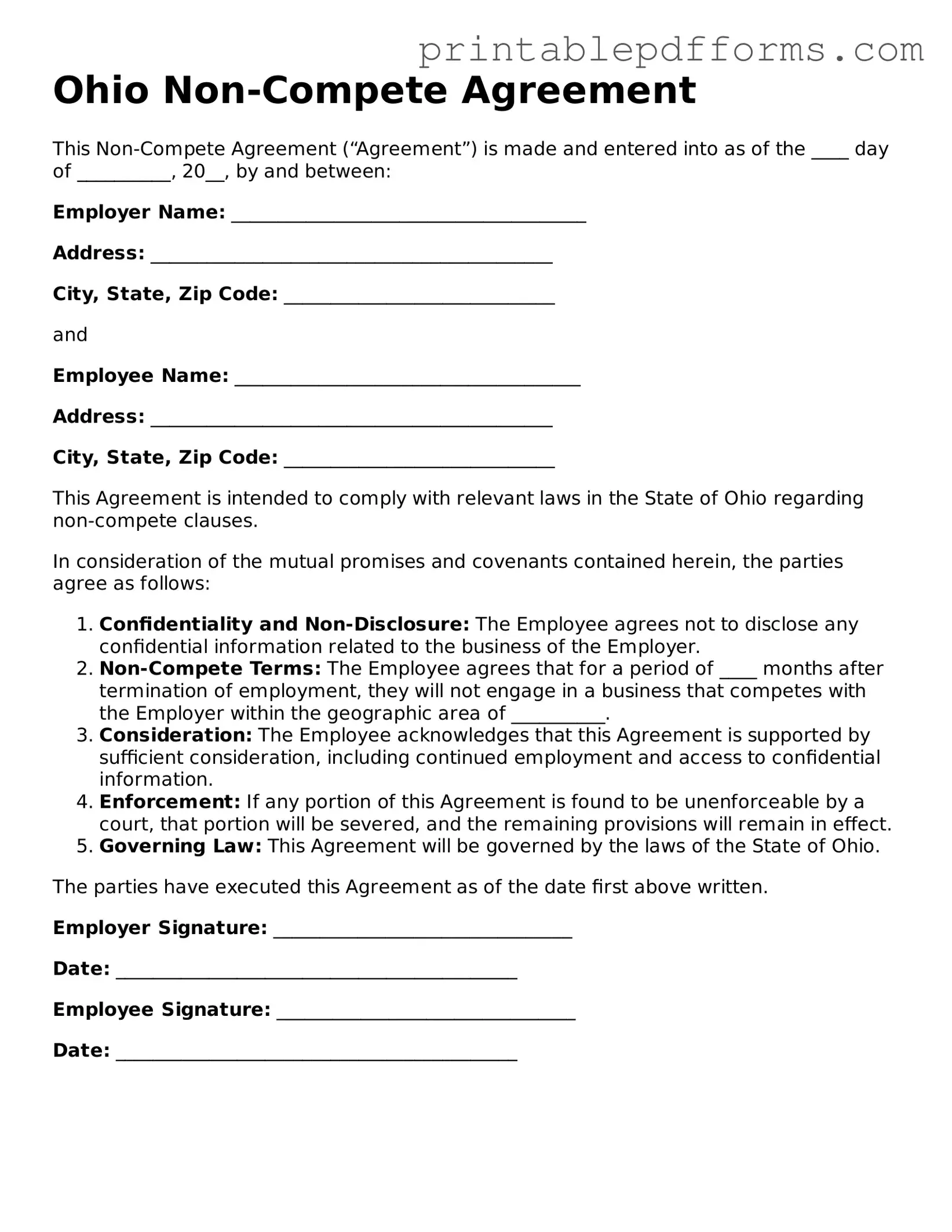Ohio Non-Compete Agreement
This Non-Compete Agreement (“Agreement”) is made and entered into as of the ____ day of __________, 20__, by and between:
Employer Name: ______________________________________
Address: ___________________________________________
City, State, Zip Code: _____________________________
and
Employee Name: _____________________________________
Address: ___________________________________________
City, State, Zip Code: _____________________________
This Agreement is intended to comply with relevant laws in the State of Ohio regarding non-compete clauses.
In consideration of the mutual promises and covenants contained herein, the parties agree as follows:
- Confidentiality and Non-Disclosure: The Employee agrees not to disclose any confidential information related to the business of the Employer.
- Non-Compete Terms: The Employee agrees that for a period of ____ months after termination of employment, they will not engage in a business that competes with the Employer within the geographic area of __________.
- Consideration: The Employee acknowledges that this Agreement is supported by sufficient consideration, including continued employment and access to confidential information.
- Enforcement: If any portion of this Agreement is found to be unenforceable by a court, that portion will be severed, and the remaining provisions will remain in effect.
- Governing Law: This Agreement will be governed by the laws of the State of Ohio.
The parties have executed this Agreement as of the date first above written.
Employer Signature: ________________________________
Date: ___________________________________________
Employee Signature: ________________________________
Date: ___________________________________________
